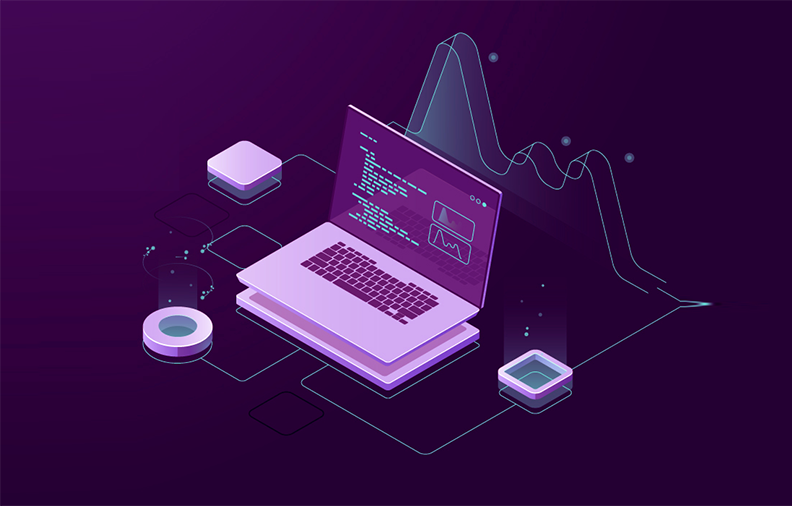
The professionals in this industry use engineering and fabrication skills to produce a structured production process. The field uses innovative and technically competent people who can aid a company to attain effective and profitable efficiency.
What is Industrial Technology?
Inside Industrial Technology
It is the use of engineering and manufacturing technology to make production simpler, faster and more efficient. The industrial technology field consists of a wide range of career choices and employs professionals with expertise in a variety of disciplines. For example, industrial technology professionals might run the heavy machinery that manufactures products or set up devices to cut molds that form parts of products, like buckles, lanterns, and cars. Industrial technology specialists need to think outside the box to produce and apply more effective manufacturing and production techniques.
How modern-day technology is assisting numerous industrial sectors to advance?
Advances in various technologies have helped a variety of industries to move forward and welcome the Fourth Industrial Revolution. Manufacturing represents a tremendous $2.17 trillion of the U.S. economy, and in spite of popular belief, it is actually increasing, up by more than 27 percent from just 2009. This industry has definitely seen its fair share of ups and downs for many years. From offshoring to job cuts, production has been at the whim of economic and international patterns. The latest movement includes technological advancements and the effect these developments have on factories and workforce demographics. Many modifications in the production market have actually come from customer need. Customers want things much faster and much better, personalized and distinct. Therefore, makers have had to find ways to keep up, not only with the need for items but also with finding knowledgeable workers to make these items.
How assisted manufacturing is affecting the consumer base?
New technological advances in manufacturing have assisted to better satisfy consumer needs. Using computerized maintenance management systems (CMMS), the production market became more effective. It tracks system maintenance, inspections, and breakdowns, making disturbances smaller and even obsolete. Instead of tracking issues or changes by hand on a notepad, a CMMS handles all of this remotely, increasing efficiency. The advantages consist of fewer repairs, lower upkeep costs, a streamlined workforce, and historical data and pattern reports.
Big data
Banks and other organizations are using Big Data to understand consumer behavior in a bid to serve consumers better. Big Data is assisting industries in handling resources better and helping employees complete jobs faster. Shopping trends are now predictable, and merchants can make better suggestions to customers based on these patterns. Research has become better through Big Data, and a lot of data can be browsed or sifted through in mere seconds. Patterns are now discovered in the strangest of things, and many companies are using these patterns to make predictions. Adverts now target consumers more effectively.
Drones
Drones have found more industrial uses than in the past. They are more than simple recreational toys. Online shopping giant Amazon is dealing with drone shipment systems. In some rural parts of Africa, drones are used to deliver medical supplies. Drones are also utilized in hospitals to deliver products on different floors. Large warehouses are now keeping track of goods using drones. Farmers also use drones to monitor their farms and identify bug infestation, infected crops, and other things faster. In show business, drones are being used creatively to amuse people and form pyrotechnic displays. In the oil and gas sector, they are used to keep an eye on the environmental impact of numerous installations. In mining, drones survey mining operations and take better measurements. In the construction industry, they are utilized to evaluate topography, monitor building development and carry out ground surveying.
Image recognition
Image recognition is advancing various industry sectors in many ways. Industries now use image recognition for facial recognition, surveillance, video analysis, driverless cars, augmented reality (AR) and so on. For example, in the fashion business, there are now apps that can record images of individuals and offer more information about the clothes those people are wearing. The individual can then choose to get the clothes from online stores. They can then use the camera of their smart devices to scan items and purchase them online. Hotels and other organizations in the hospitality sector can now identify visitors as they stroll into their facilities. This will help them improve their customer care.
Virtual Reality (VR)
Virtual reality has now ended up being more than just for home entertainment. Companies are now using VR technology in various ways. In the property market, some companies have VR services that allow possible home purchasers stroll through every element of a home and see every detail of the house right from their living-room couch.
What’s Happening to the Workforce?
As interesting as these technological advancements are, they have had a profound effect on the production workforce. 80 percent of producers say they have a moderate or severe shortage of qualified applicants for skilled or extremely knowledgeable positions. It is predicted that as many as 2 million production jobs will be incomplete due to this abilities gap. For instance, 3D printing is becoming less expensive, and less time and product are required to produce an intricate design. These kinds of products will not need an assembly line however rather an experienced engineer to style and manufacture shapes not produced in a factory. It’s simple to see how production is changing from what was as soon as a blue-collar labor force to a highly trained white-collar occupation. Today’s production staff member is not only highly proficient but also highly paid, earning about 24 percent more each year than the typical U.S. worker. Technology is helping to make these tasks more financially rewarding than before.
Closing the technological gap
A few ways to close the abilities gap have been proposed, such as Motivating science, technology, engineering, and mathematics (STEM) education in schools. Changing the preconception surrounding production tasks. Training employees to prepare them for more complex tasks. How this gap will be closed is still unknown. Most likely a combination of many efforts will prove successful. What is known though is how technology is making this industry entirely different than it was 10 – 20 years ago.
How to make the most of industrial technology?
Incorporating industrial technology
In order to fully utilize industrial technology, makers need to think beyond singular and separated investments in “the next big thing,” whatever innovation that may be. In order to fully embrace the brand-new era of digital technology, in a lot of cases makers require to reconsider how they approach their organization. Examine these four steps to get your digital change on the right track and maximize your investment in industrial technology, and the future.
Think long-term
Bringing your storage facility or assembly line into the digital age isn’t an overnight procedure, and it’s a process that is never going to be completely done. Begin by specifying particular organization goals and the essential performance indicators (KPIs) for 1, 5, and 10 years in the future.
- What can you achieve this month to support this year’s goals?
- What can you accomplish this year to feed your objectives 5 years from now?
These are complicated objectives sometimes, but breaking them down makes it possible to move on methodically. Within this structure, mobilize internal teams to establish procedure and techniques to attain those goals. As they work backward, the shortages within existing systems and processes will be highlighted. You’ll see which actions can yield results today and next year. This procedure, which should take place across and in between departments, will help leaders identify priorities for investment. For instance, a manufacturing plant makes a strategic objective to increase production in an existing plant by 20 percent in 2 years’ time. In order to attain this objective within the existing footprint, they need to acquire new technology, embrace automation, and software upgrades that can help them run in a faster, more effective manner.
Make use of your data with The Industrial Internet of Things (IIoT)
IIoT has changed the market’s capability to gather and examine data. Manufacturers need to employ this data (and other sources) to make smarter choices about their digital and technological investments.
Some questions you can ask to get your mind working:
- Where is the facility seeing hold ups in their processes?
- Where are workers most susceptible to make errors, and in which job set
- What are the variables that make a difference for each department?
Each department ought to analyze the data readily available to them to make a case for change and financial investment.
Pick your investment carefully
As mentioned previously, digital financial investments require to be carefully considered and planned. A financial investment in a brand-new, faster, more effective conveyor system won’t get the outcomes you’re looking for if other aspects of your upstream and downstream processes aren’t prepared to match its efficiency. In addition, consider cross-departmental problems and obstacles. For instance, it’s amazing if your storage facility can process 20 percent more orders daily with brand-new technology, however, if sales are stagnant, then you have a problem. Many businesses take a look at order satisfaction upgrades only after they lag behind meeting sales goals. Make sure every financial investment of time, energy, capital, and technology is a step towards a defined company goal. Development and change in essential performance indications need to be tracked and evaluated every step of the way.
Do not adapt industrial technology in seclusion
This isn’t a simple process, and like other hard things, the companies who persist and lead will gain considerable benefits over their competition. All businesses, across all industries, are battling with digital transformation. The manufacturing area is not different. Look for partners, mentors, and experts to help your internal processes and strategic efforts. Don’t hesitate to ask questions, admit you don’t understand the responses, and seek out alternatives. Find motivation from other company designs and markets. Discover methods to include terrific ideas into your own business and procedures.
Also, take advantage of another knowledge base, one that understands your service intimately: your staff members. The objective of digital improvement is to change the way your business works, enable development, and open new avenues for development. These are goals will not only impact every staff member but take into consideration the effort of every staff member. Engaging this important resource is crucial.
Benefits of Technology in Manufacturing
What industrial technology brings to the table?
The advancement of the Manufacturing Industry and Processes could be traced along the same lines as that of the IT Industry. One of the fundamental and common beliefs considering the evolution cycle of these industries is the lowering Human Interface. From manual manufacturing processes of yesterday, the market today has actually made a shift and has actually begun seeing the advantages of Digital Manufacturing. It simulates all the processes of manufacturing on computers to define the most efficient procedures for the companies. The whole manufacturing process right from Assembly lines, human ergonomic simulation, Robotic Simulation, plant design, etc. could be specified, established, executed and kept an eye on virtually in the 3D environment.
This results in making it possible for companies to achieve utmost production performance, in lessened time and costs, consequently facilitating early entry to the marketplace. From Toyota, the early adopters of this imminent technological trend, to MNC TATA Motors who are also not far behind, all the vehicle companies in the world are now digitally simulating their plant layouts and production processes in their efforts to achieve improved production quality.
Using Digital Manufacturing Solutions
Digital Manufacturing Solutions and innovations like “Design for Manufacturing” and “Design for Servicing” assist the business set up the optimum work streams throughout the plant layout phase which enables the companies to improve the efficiency and general output of the company. Digital producing solutions could be utilized to create and plan the green plant (right from scratch for a new plant) or brown plant (to bring out necessary development and layout changes in the existing plant). In any case, it configures optimal and personalized workflows for the business which would help them produce the highest possible level of production output consequently enhancing the production capacity of the plant.
Resolve any concerns and constraints with the use of Industrial Technology
Concerns about restrictions in manufacturing or feasibility of production, widely referred to as “manufacturability concerns” or “ergonomic constraints” are extremely difficult and expensive to correct once the plant and procedures are established. A preview would assist companies in determining such issues at an earlier stage hence conserving the time and expense of rectification. Because digital manufacturing services create and present the plant’s plan in a 3D environment, it becomes easy for the business to validate and examine their styles to identify such issues beforehand and address them at the preparation stage. Apart from virtual validation of plants and procedures, these technologies also assist the companies in strategizing and allocating their resources and also make optimal use of their readily available plant area. Human ergonomic simulation helps companies to determine the ways of performing a task by hand which would trigger minimum physical stress to individuals working on the shop floor. This lowers possibilities of mishaps and occupational hazards. It thus assists companies to build plants that are more efficient yet safe, protected, and employee friendly.
Use Industrial Technology to make calculated risks
More than ever companies, nowadays, believe in taking calculated risks. To sustain and continue competition, the companies are devoted to carrying out management principles such as Six Sigma, etc. The digital production processes could prove to be advantageous for the business devoted to implementing Six Sigma. It would in-turn assist the business in manufacturing products and procedure quality improvement and control, which would identify flaws, lower mistakes and so on to achieve utmost production accuracy. Thus the advantages of such solutions are not just limited to the shop floor but also encompassing achieving management objectives.
Thanks to such innovations, companies today can try out numerous “what if” scenarios at low costs to confirm their procedures and reach the most optimal services. They can attempt all the choices through simulation and finally integrate the suitable modifications in the real practice which would best benefit them. Businesses stand to benefit from the advantages of virtual validation and simulation of plants and processes, concurrent engineering and customized methods to get to the ideal approach for accomplishing greater effectiveness.
Industrial Technology Applications
Examples of manufacturing technology
Here is a look at 6 revolutionary innovations that are changing the look of production as we now know it.
3D Printing
After reinventing the world of product designing, 3D printing is now making waves in the manufacturing market. The ability to style and create virtually anything using any material will undoubtedly alter the way we develop products. Also referred to as additive production, 3D printing brings a mixed bag of advantages that make it worth the investment:
- Drastically lower design-to-production times.
- Drastically lower producing lead times.
- Make it easier to produce individual and small lot products from device parts to models.
- Bring in greater versatility in production.
- Produce less waste, and it is more cost effective.
What is so great about 3D printing is it is still new and is only going to get better, which makes now the best time to begin including it.
The Internet of Things (IoT)
Early on, the Industrial Revolution’s primary objective of manufacturing plants was interconnectivity. The IoT takes this objective to a whole new level though with machines, and human beings working better together than in the past. More connections mean better communication, faster action times, and higher performance throughout the board.
For instance, suppose a producing company owns a piece of equipment that should never drop below 100 gallons of fluid in the system. A meter is attached to the devices, and the IoT enables the meter to send data wirelessly. The information is transferred into a Computerized Maintenance Management Systems (CMMS) which in turn notifies the relevant personnel when the fluid level falls below a specific level. This improved interconnectivity helps the production facility to lower maintenance cost, boost effectiveness, and prevent costly downtime. This is just among many examples, however, of how the IoT will enhance and enhance producing operations in the years to come.
Nanotechnology
Admittedly this is still a couple of years off from mainstream use, but nanotechnology is still pertinent today to make the list. Nanotechnology describes the adjustment of matter on an atomic, molecular, or supramolecular level. For standard production fields, this means enhancing products to make them last longer or give them new properties like clothing that can feel warmer or cooler. For the computer system industry, nanotechnology offers faster processing and more memory.
At the moment, nanotechnology is primarily utilized in space engineering and biotech. However, it is finding its way into manufacturing. The next step is Atomically Precise Manufacturing (APM), which might effectively change everything about production. Simply envision developing a product from the molecular level up.
Cloud Computing
Currently a staple in other industries, the cloud is now starting to have a substantial impact on manufacturing. Production has actually been late-to-the-game mainly due to connectivity and security issues, but as cloud computing advances, these concerns dissipate. While the IoT enhances connectivity within a single plant, cloud computing enhances connection across several plants. Companies can share information across the globe in the blink of an eye, lowering both costs and production times. The shared data also go a long way in improving product quality and consistency between plants.
Next-Level Robotics
Last year, China’s trailblazing endeavors in robotics ended with its Dongguan factory replacing 650 people with 60 robotic production arms. Everwin Precision Technology, the proprietor of the plant, wants to replace 80% of its production with 1,000 robotic arms by next year. The use of robotics raises a lot of philosophical concerns for it to be blindly embraced. Complete automation may benefit basic productivity; however, theorists claim it harms innovation. The West is having a somewhat opposite reaction to robotics with more concentration on the achievements of the individual. Outside China, robots are thought to complement, not replace, human workers, i.e. “cobotics.”. There is no denying the role robotics will play in production soon.
Augmented Reality
Despite the failure of Google Glass, the concept of enhanced precision eyeglasses is practical enough to make it through. In production, the technology could be used for:
- Real-time instructions/guidance.
- Real-time notifications.
- Real-time monitoring of worker jobs.
- Improved security cautions.
- More effective training.
- Data retrieval.
- Reduce the need for on-site maintenance/technical support.
Like the others on the list, augmented reality is still new, and it will be amazing to watch it grow and develop in the next couple of years.









